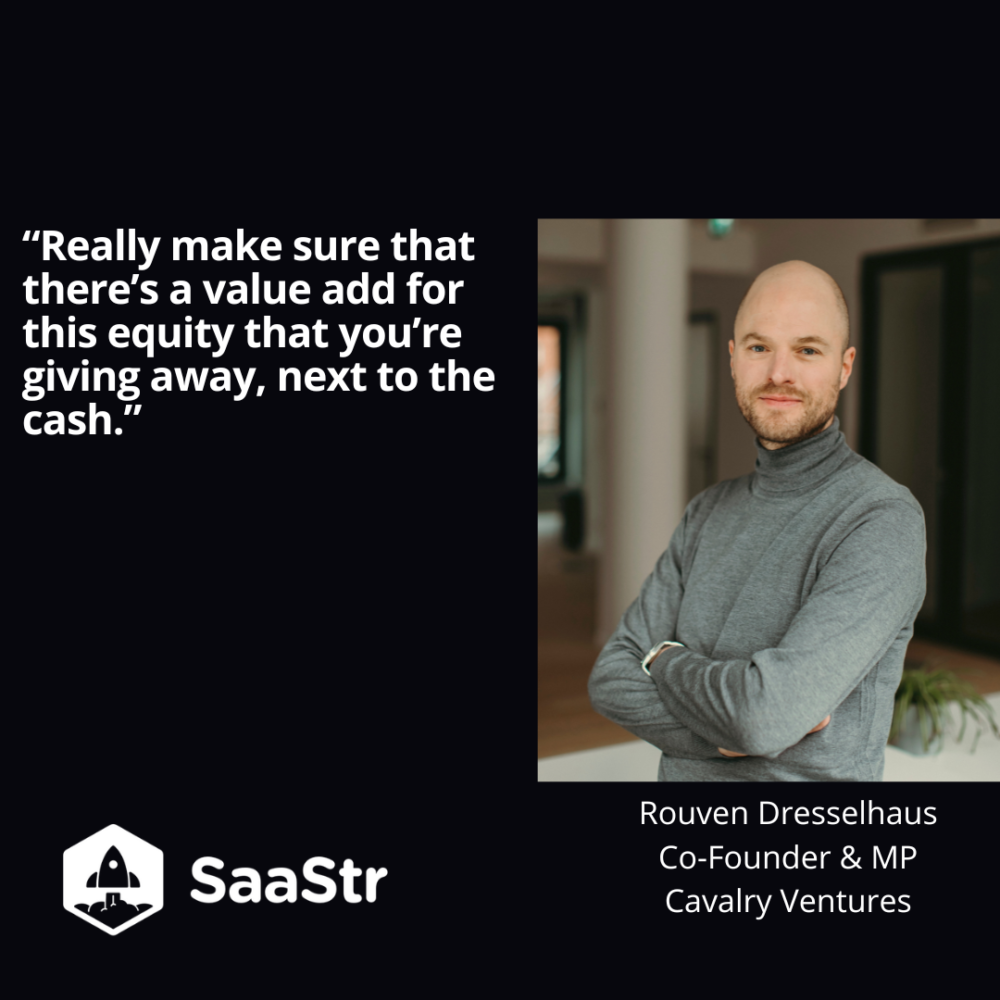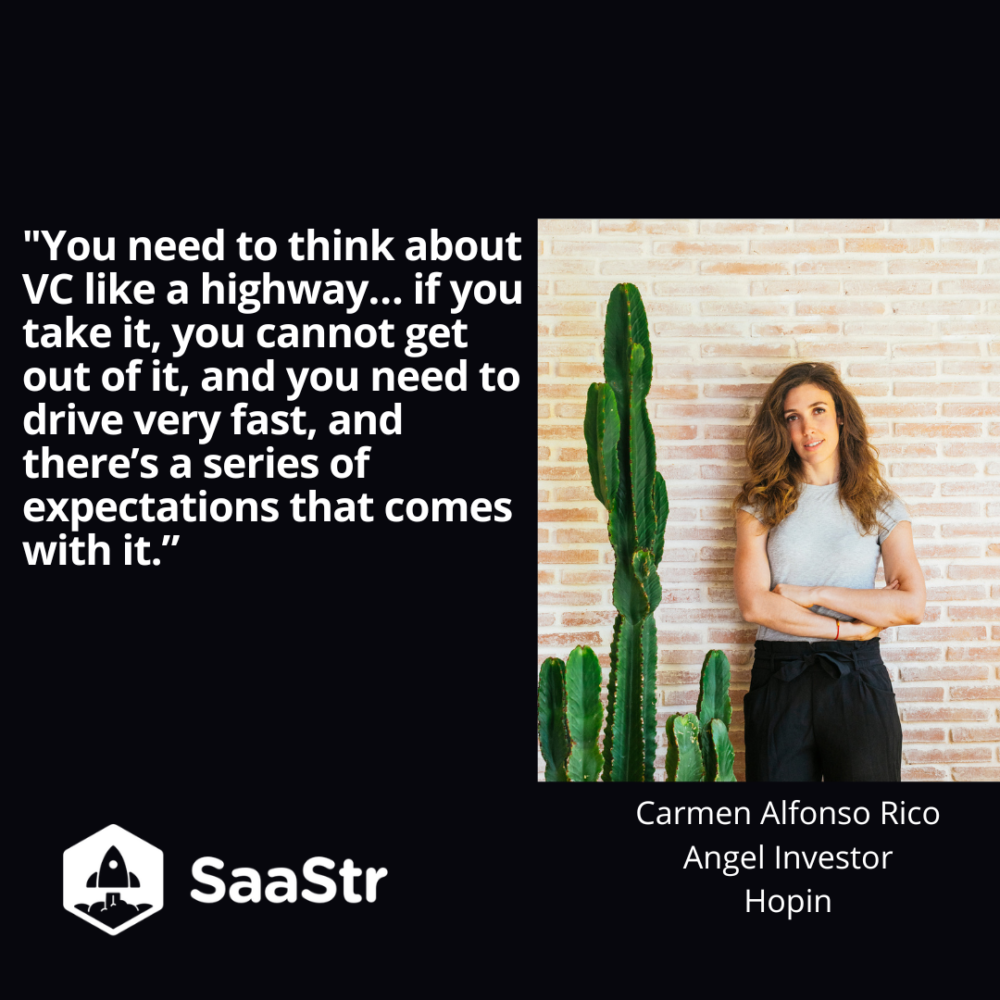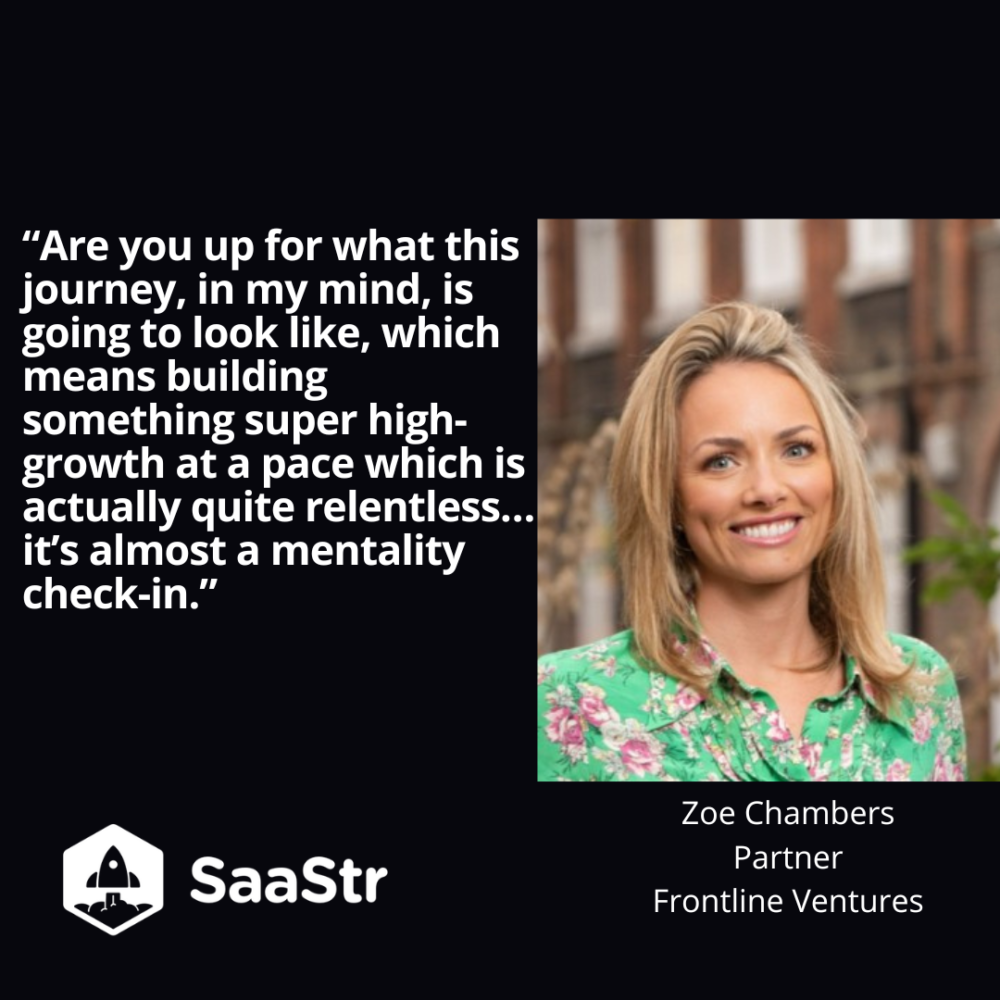One of the most exciting and terrifying things a SaaS founder can do is raise seed funding. But bringing on an investor comes with new responsibilities, and navigating the fundraising world can seem complex.
In this SaaStr Europa 2022 session, David Kelly (General Partner at Tapestry) interviews a group of highly experienced investors, including Zoe Chambers (Frontline Ventures), Carmen Alfonso Rico (Cocoa), and Rouven Dresselhaus (Calvary Ventures).
#1: Why Seed Funding Anyway?
Before you start planning for your seed round or seeking out an angel investor, you must pause and decide if you really want or need a seed investor. Dresselhaus says, “I think it’s really important to understand that not every founder team should take seed funding because there are different models, there are also different expectations from investors, for example, for founders.” He emphasizes, “Really make sure that there’s a value add for this equity that you’re giving away next to the cash.”
Alfonso Rico agrees, saying that success can be found with or without an investor. Still, once you choose to move forward with funding, you need to embrace the total commitment: “You need to think about VC like a highway… if you take it, you cannot get out of it, and you need to drive very fast, and there’s a series of expectations that comes with it.”
Chambers believes that founders should also understand that alignment and cohesive vision should be top-of-mind for the investor and the founder: “Are you up for what this journey in my mind is going to look like, which means building something super high-growth at a pace which is actually quite relentless…it’s almost a mentality check-in.”

#2 When to Raise a Seed Round?
Timing is different for everyone, but you will need to take time to show the metrics and tell the story that VCs want to see. Do you understand the potential of your product? Do you strongly understand the market and how your company fits in? Are you positive that you need seed funding, and do you have a plan of where to dedicate the cash?
To raise funding, you must finetune your de-risking strategy and have a strong plan that sways investors, especially in the current uncertain market.
#3 Can I Raise Remotely?
In a world after the pandemic, the rules have completely changed, even when it comes to investing. It’s no longer necessary to fly to London or San Francisco or base your company in any particular place. Remote meetings are completely acceptable.
However, it’s never a bad idea to visit the traditional tech centers to learn a little bit and network. But remember, changing locations isn’t necessary. As Alfonso Rico says, “If the intrinsic value of what you’re creating is exciting, people will go anywhere to fund you.”

#4 How Should I Structure My Cap Table?
For a seed round, founders should focus on finding experienced and connected investors, preferably in a relevant space. You want to make sure that your company matters to the VC, and one way you can do this is by looking at your ticket size. How much of the fund is dedicated to your business?
Yet, it takes a nuanced approach when you’re thinking about this. Closed funds typically take roughly four years of investment, and then they might deploy reserves. And then there is the stage where investors must be accountable to their investors as well. Understanding the VC side more clearly can help you get a fuller picture of where your company stands with them.
#5 How Do You Create Momentum When You’re Fundraising?
Founders might think about hacking their fundraising to create momentum for their business, but how can you go about doing this practically?
One piece of advice is to think about your fundraising efforts as a B2B sales funnel. With investors, the motion can be very similar, but with different tools. Best-case scenario is to create a strong story to sell your potential, network, meet some insiders, and push through to a meeting. When you are fundraising, you must operate with complete, ruthless focus until you achieve your desired results.

#6 What is the Seed Market Really Like Right Now?
It’s a time of constant flux in the world and in the market, and because of uncertainty, founders hoping to raise seed rounds must up the ante. Deals are still happening, but there are higher expectations and happening at a slower velocity, so founders need to be on top of their game.
The good news is that SaaS won’t be going away anytime soon, as digitization becomes more ingrained in our society. So if you have the next great product, don’t be afraid to go for it!
Key Takeaways:
- Don’t just go through the motions –– do some soul searching and decide if taking on investors is right for your business.
- You can meet investors and raise remotely, but it never hurts to pay an in-person visit to network.
- Treat your fundraising like a B2B sales funnel.
- Deals are still happening, but founders should be prepared to meet a higher standard to stand out.
The post 6 Things No One Tells You about Raising a Seed Round with Tapestry VC, Cocoa, Frontline Ventures, and Cavalry Ventures (Video) appeared first on SaaStr.
via https://www.aiupnow.com
Amanda Beaty, Khareem Sudlow

